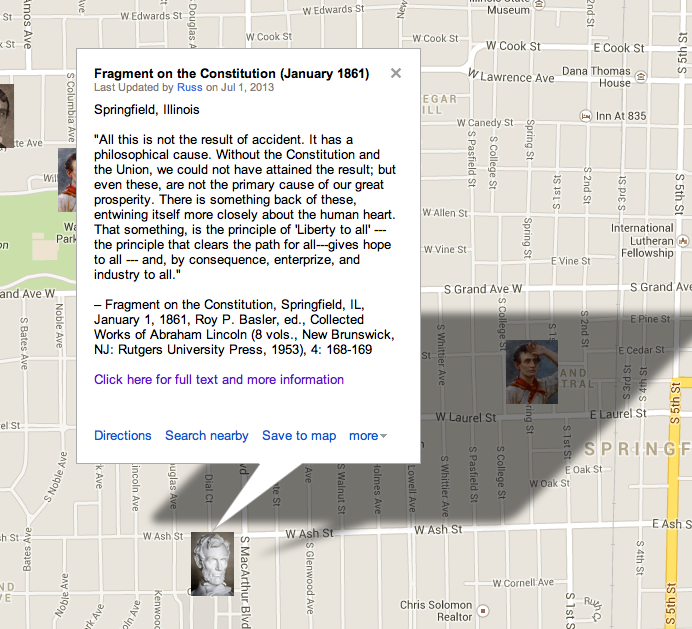Contributing Editors for this page include Rob O’Keefe
Ranking
#50 on the list of 150 Most Teachable Lincoln Documents
Annotated Transcript
On This Date
[Editorial Note: This undated fragment has traditionally been considered to have been created in January 1861]
HD Daily Report, January, 1861
Custom Map
Close Readings
Rob O’Keefe, “Understanding Lincoln” blog post (via Quora), June 28, 2014
How Historians Interpret
“As the image of the apple of gold and the picture of silver indicates, Lincoln believed that the Declaration and the Constitution needed each other. The Declaration was a statement of foundational natural rights and natural rights which were shared everywhere by every human being. But it was not, and could not be, a statement about civil or political rights, which were a different thing altogether.”
— Allen C. Guelzo, Abraham Lincoln as a Man of Ideas (Carbondale: Southern Illinois University Press, 2009), 114.
“Pursuing inquiry in Socratic terms, Lincoln the philosopher statesman probed the underlying ‘philosophical cause’ of the Union’s success in maintaining ordered liberty He attributed this success to the perpetuation of the principles of the Declaration as safeguarded by the Constitution. On the eve of the Civil War, the sixteenth president summed up his philosophical vision of the Union in a letter to Alexander Stephens, a former Whig colleague who had initially opposed Georgia’s session. He used a biblical metaphor from Proverbs 25:1, ‘A word fitfully spoken is like apples of gold in pictures of silver’ to convey the complementary relationship between the Declaration and the Constitution in securing a ‘more perfect’ Union…”
— Joseph R. Fornieri, Abraham Lincoln: Philosopher Statesman (Carbondale: Southern Illinois University Press, 2014), 14.
NOTE TO READERS
This page is under construction and will be developed further by students in the new “Understanding Lincoln” online course sponsored by the House Divided Project at Dickinson College and the Gilder Lehrman Institute of American History. To find out more about the course and to see some of our videotaped class sessions, including virtual field trips to Ford’s Theatre and Gettysburg, please visit our Livestream page at http://new.livestream.com/gilderlehrman/lincoln

